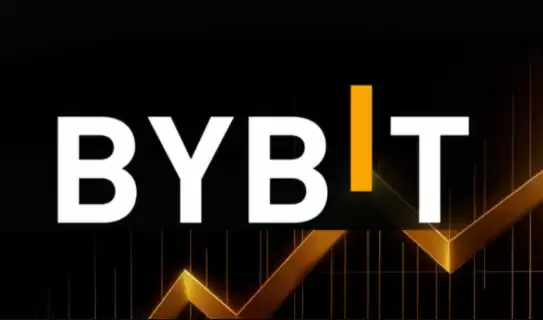-
 bitcoin
bitcoin $122659.385674 USD
0.52% -
 ethereum
ethereum $4484.113342 USD
-0.09% -
 bnb
bnb $1304.229256 USD
-0.85% -
 tether
tether $1.000204 USD
-0.03% -
 xrp
xrp $2.860636 USD
-0.51% -
 solana
solana $227.288799 USD
2.36% -
 usd-coin
usd-coin $0.999805 USD
0.01% -
 dogecoin
dogecoin $0.252837 USD
1.18% -
 tron
tron $0.341149 USD
1.12% -
 cardano
cardano $0.830507 USD
0.33% -
 hyperliquid
hyperliquid $45.792319 USD
0.04% -
 chainlink
chainlink $22.422164 USD
1.55% -
 ethena-usde
ethena-usde $1.000283 USD
0.01% -
 sui
sui $3.511389 USD
0.83% -
 stellar
stellar $0.385276 USD
-0.44%
How to do a Bybit contract without losing money
Understanding contract trading basics before delving into Bybit's platform is crucial for minimizing losses and maximizing profits.
Nov 21, 2024 at 04:02 pm

Navigating the volatile world of cryptocurrency contract trading requires a robust strategy to mitigate losses and maximize profits. Bybit, a leading derivatives exchange, offers a comprehensive suite of features to empower traders. This guide will provide a step-by-step walkthrough on how to trade Bybit contracts effectively and minimize the risk of monetary setbacks.
1. Understand Contract Trading BasicsBefore delving into Bybit contract trading, it's crucial to grasp the fundamental concepts. A contract is an agreement between two parties to exchange an asset at a predetermined price on a specific date. In the case of crypto contracts, the underlying asset is a cryptocurrency, such as Bitcoin or Ethereum.
2. Choose the Right Contract TypeBybit offers various contract types tailored to different trading strategies. Perpetual contracts are the most popular, offering perpetual exposure to the underlying asset without an expiry date. Quarterly and bi-quarterly futures contracts expire on specific dates, providing the flexibility to lock in profits or limit losses.
3. Set Appropriate LeverageLeverage, a tool that amplifies potential profits but also increases risk, should be used judiciously. Bybit allows leverage up to 100x, but it's advisable for beginners to start with lower levels (10x or 20x) until they gain experience.
4. Risk Management StrategiesEffective risk management is paramount in contract trading. Stop-loss orders automatically close positions when the market moves against you, limiting potential losses. Take-profit orders lock in profits when a target price is reached.
5. Position SizingDetermining an appropriate position size is critical to avoid overexposure. Consider the account balance, risk appetite, and volatility of the underlying asset when calculating the number of contracts to trade.
6. Trade PlanningBefore entering any trade, it's essential to have a clear strategy that defines entry and exit points, risk tolerance, and profit targets. This roadmap provides a framework for decision-making and helps mitigate impulse trading.
7. Technical and Fundamental AnalysisTechnical analysis uses historical price data to identify patterns and predict future price movements. Fundamental analysis examines economic and market factors influencing the underlying asset's value. Combining both approaches enhances decision-making accuracy.
8. Practice on a Demo AccountBybit offers a demo account with virtual funds, enabling traders to hone their skills and test strategies without risking real capital. Utilize this feature to gain confidence and familiarity before trading with actual funds.
9. Continuous LearningThe cryptocurrency market is constantly evolving, and it's essential to stay up-to-date with market trends, trading techniques, and industry news. Bybit provides educational resources and market insights to empower traders.
10. Patience and DisciplineProfitable contract trading requires patience and discipline. Avoid chasing after quick gains and stick to a well-defined strategy. Remember that even experienced traders experience setbacks, but adhering to sound principles will minimize losses in the long run.
Disclaimer:info@kdj.com
The information provided is not trading advice. kdj.com does not assume any responsibility for any investments made based on the information provided in this article. Cryptocurrencies are highly volatile and it is highly recommended that you invest with caution after thorough research!
If you believe that the content used on this website infringes your copyright, please contact us immediately (info@kdj.com) and we will delete it promptly.
- CEA Industries & Jon Najarian: Bridging Traditional Finance with BNB
- 2025-10-09 21:05:16
- Binance Alpha's AB Token Crash: A Cautionary Tale in Cryptocurrency
- 2025-10-09 20:45:17
- Crypto Investors Embrace Stock-Picking: Bitwise CEO's Insight
- 2025-10-09 21:05:16
- Coinbase, Cruise, and Crypto Compliance: Navigating the Waters of Digital Finance
- 2025-10-09 21:10:12
- Crypto ETFs, Altcoins, and Wall Street: Navigating the New Frontier
- 2025-10-09 20:45:17
- Bitcoin's Decade of Dominance: A Super Reason to Hold for the Next 10 Years?
- 2025-10-09 20:25:15
Related knowledge

Practical parameter settings for a Bitcoin multi-timeframe moving average system
Sep 18,2025 at 10:54pm
Optimizing Timeframe Combinations for Bitcoin Trading1. Selecting appropriate timeframes is crucial when building a multi-timeframe moving average sys...

How can I filter out false breakouts in Dogecoin high-frequency trading?
Sep 22,2025 at 01:00am
Understanding False Breakouts in Dogecoin Trading1. A false breakout occurs when Dogecoin's price appears to move beyond a defined support or resistan...

Techniques for identifying tops and bottoms in the Bitcoin on-chain NVT model
Sep 20,2025 at 07:54pm
Understanding the NVT Model in Bitcoin Analysis1. The Network Value to Transactions (NVT) ratio is often described as the 'P/E ratio' of the cryptocur...

What does the surge in open interest in Bitcoincoin futures mean?
Sep 20,2025 at 11:18pm
Understanding the Surge in Dogecoin Futures Open Interest1. A surge in open interest within Dogecoin futures indicates a growing number of active cont...

How can I use the Ethereum USDT premium to gauge market sentiment?
Sep 18,2025 at 11:55pm
Understanding the Ethereum USDT Premium1. The Ethereum USDT premium refers to the price difference between USDT (Tether) traded on Ethereum-based plat...

What should I do if Ethereum staking yields decline?
Sep 20,2025 at 06:18am
Understanding the Causes Behind Declining Ethereum Staking Yields1. The Ethereum network transitioned to a proof-of-stake consensus mechanism with the...

Practical parameter settings for a Bitcoin multi-timeframe moving average system
Sep 18,2025 at 10:54pm
Optimizing Timeframe Combinations for Bitcoin Trading1. Selecting appropriate timeframes is crucial when building a multi-timeframe moving average sys...

How can I filter out false breakouts in Dogecoin high-frequency trading?
Sep 22,2025 at 01:00am
Understanding False Breakouts in Dogecoin Trading1. A false breakout occurs when Dogecoin's price appears to move beyond a defined support or resistan...

Techniques for identifying tops and bottoms in the Bitcoin on-chain NVT model
Sep 20,2025 at 07:54pm
Understanding the NVT Model in Bitcoin Analysis1. The Network Value to Transactions (NVT) ratio is often described as the 'P/E ratio' of the cryptocur...

What does the surge in open interest in Bitcoincoin futures mean?
Sep 20,2025 at 11:18pm
Understanding the Surge in Dogecoin Futures Open Interest1. A surge in open interest within Dogecoin futures indicates a growing number of active cont...

How can I use the Ethereum USDT premium to gauge market sentiment?
Sep 18,2025 at 11:55pm
Understanding the Ethereum USDT Premium1. The Ethereum USDT premium refers to the price difference between USDT (Tether) traded on Ethereum-based plat...

What should I do if Ethereum staking yields decline?
Sep 20,2025 at 06:18am
Understanding the Causes Behind Declining Ethereum Staking Yields1. The Ethereum network transitioned to a proof-of-stake consensus mechanism with the...
See all articles


























![🚨IS VECHAIN (VET) A DEAD COIN ?? PRICE ANALYSIS [GET READY NOW] 🚨IS VECHAIN (VET) A DEAD COIN ?? PRICE ANALYSIS [GET READY NOW]](/uploads/2025/10/09/cryptocurrencies-news/videos/vechain-vet-dead-coin-price-analysis-ready/68e7b200b067b_image_500_375.webp)















































